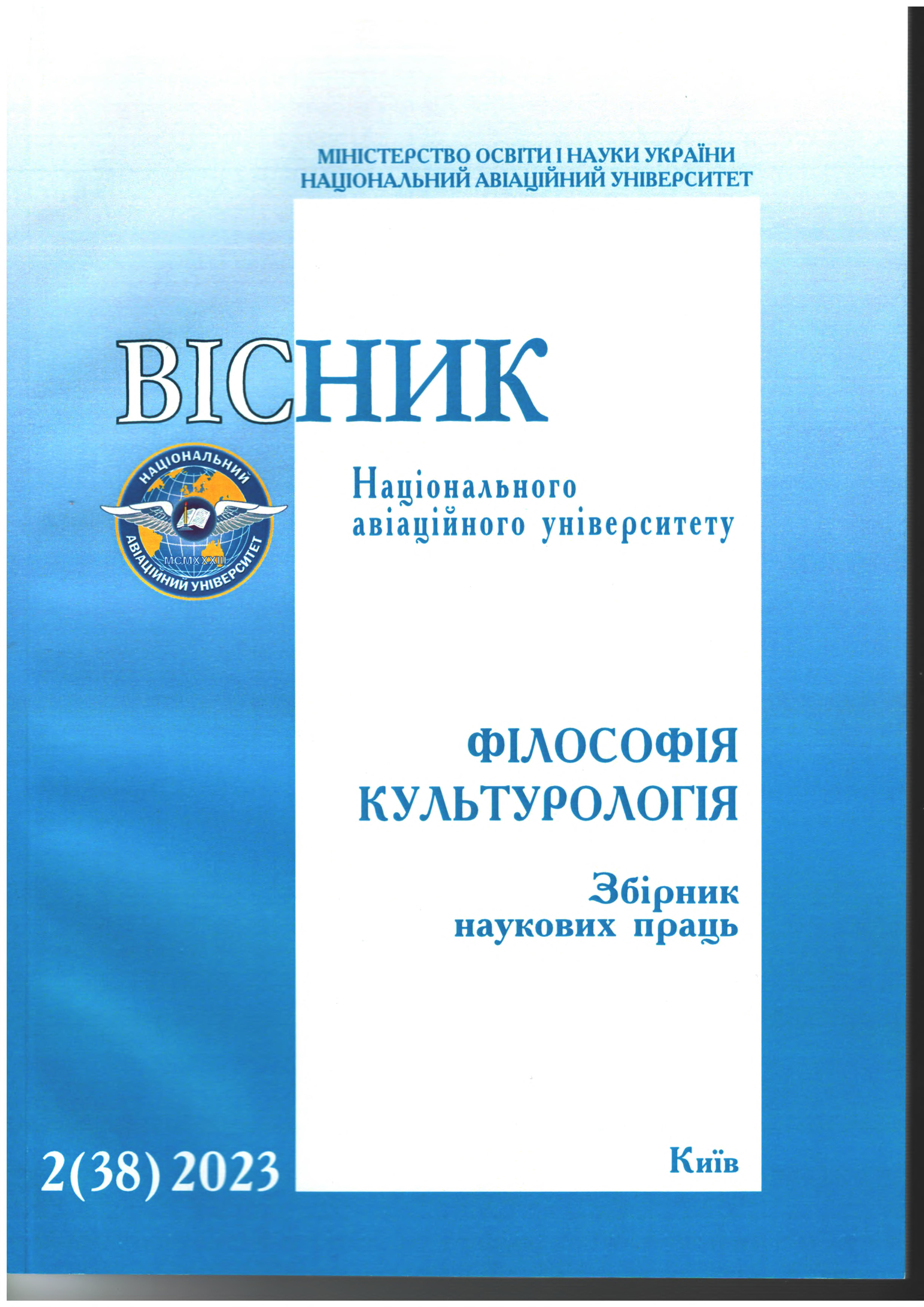PHILOSOPHICAL BASIS OF THE ANALYSIS OF RELIGIOUS CONSCIOUSNESS
DOI:
https://doi.org/10.18372/2412-2157.2.18094Keywords:
man, religious consciousness, religion, image of the world, traditions, emotions, experiences, intentionality, transcendingAbstract
Introduction. The article is devoted to the philosophical study of religious consciousness and religiosity, the specifics of its formation, and the role of religious consciousness as a variable value in sociocultural processes. The aim of the research study aims to study the formation process of religiosity and religious consciousness, as well as their essential characteristics in modern Ukrainian sociocultural space. The goal is achieved through several tasks, such as uncovering the fundamental nature and structural properties of religion and their importance in Orthodoxy; examining the perspective on religion and religious mindset in the works of influential thinkers like T. Hobbs, I. Kant, H. Hegel, V. Vernadskyi, and others. Research methods. The research was conducted based on several principles. The study used historical and comparative methods to identify the theoretical and methodological basis of the research. The comparative method, analysis, and synthesis, as well as the method of structural analysis, were used to establish the peculiarities of religious relationships and their functioning throughout the historical movement of humanity. To achieve a complete understanding of the concept of "religiosity", descriptive and inductive methods were applied. Additionally, ideographic and hermeneutics methods were used along with the dialectical method. A systems approach was followed to
analyze the essence of modern Ukrainian society and its interaction with other civilizations. Research results. During the modern period, there have been significant changes in the meanings and contents of religious consciousness. The search for opportunities to transcend the self and overcome the boundaries between the material and spiritual worlds is at the core of modernity, as well as to create a unified "picture of the world". Discussion. It is important to note that every religious tradition represents and translates a specific type of inner essence of an individual. In the Orthodox tradition, the ontological reality and fundamental uniqueness of a person’s existential situation are confirmed, which is associated with the recognition and awareness of the God-man. In this way, the definition of the essence of religion appears as the definition of the essence of religiosity. Conclusions. Religious consciousness can be understood as an act of presence in the space of being, that is, as a spatial field in which consciousness changes itself based on the emotional matrix. More precisely, the refined feeling in the immediate intention of which, as intuition, the self-worth and connectedness of consciousness in the being of the whole is realized. That is, the self-worth of consciousness is postulated, which actualizes the immediate intention of an implicit order.
References
Capra F., Luisi P.L. 2018. The Systems View of Life: A Unifying Vision. N.Y. P. 35-82.
Der Begriff Der Eigentumlichkeit Oder Individualitat Bei Schleiermacher 2018. (German Edition)& 34. 185 p. 3. Freud S. 2017. Introductory Lectures of Psychoanalysis (PFL 1) Sigmund Freud. P. 501-502.
Grof S. 1978. Realms of the Human Unconscious. N.Y., Dutton. 324 p.
Дротянко Л. Г. Трансформація людської природи в контексті системи «людина-природа». Вісник Національного авіаційного університету. Серія.: Філософія. Культурологія. № 1 (35). 2022. С. 5-10. DOI: https://doi.org/10.18372/2412-2157.
16528
Кримський С. Б. Під сигнатурою Софії. 2008. К.: Вид. дім «Києво-Могилянська академія». 367 c.


